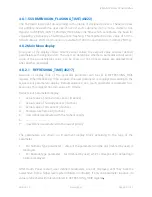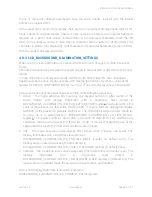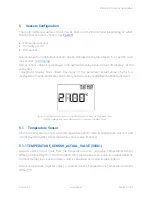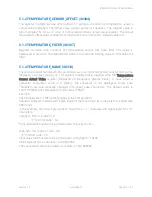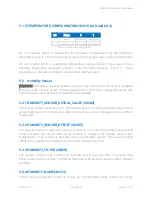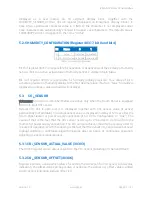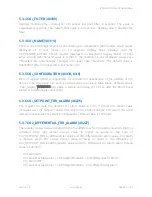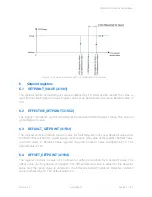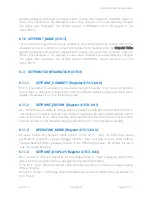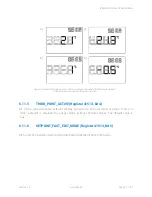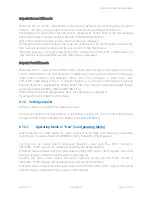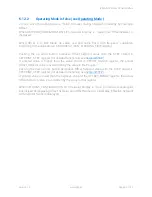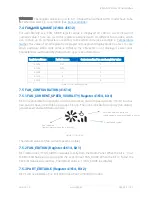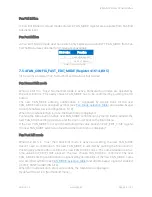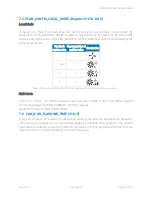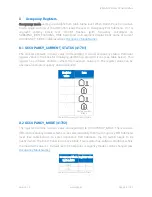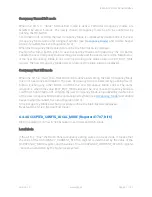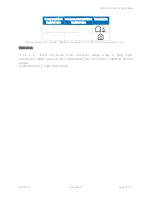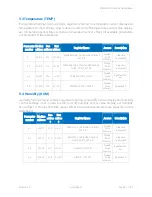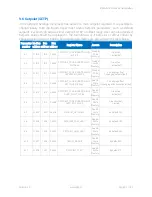
iSMA-B-LP Room Panel/Modbus
version 1.3
www.gc5.pl
Page 38 / 121
Setpoint Normal Edit mode
When the bit 5 is
“false”
, Normal Edit mode is active. Setpoint can be changed by the arrow
buttons. The newly chosen Setpoint has to be confirmed by pushing the OK button.
Confirmation of entering the new Setpoint is signalized by double blink of the new Setpoint
and double beeper signal (if enabled, DEVICE_CONFIGURATION bit 0).
When the Setpoint changing is done, the Main Menu is displayed.
Pushing the Menu button before new Setpoint confirmation by the OK Button cancels the
new Setpoint setting procedure and the user returns to the Main Menu.
If the new Setpoint is not confirmed during time value stored in EXIT_EDIT_TIME register, the
new Setpoint setting has failed and the Main Menu is displayed.
Setpoint Fast Edit mode
When the bit 5 is
“true”
, then Fast Edit mode is active and setting the new Setpoint does not
need a confirmation. The new Setpoint is selected by pushing the OK button. Pushing any
other button confirms the Setpoint choice. The same situation is when time value
EXIT_EDIT_TIME elapsed. The new chosen Setpoint is confirmed. Confirmation of entering
the new Setpoint is signalized by double blink of the new Setpoint name and double beeper
signal (if enabled, DEVICE_CONFIGURATION bit 0).
When Setpoint selection procedure is done, the Main Menu is displayed.
By default the bit is 0 (Normal Edit mode).
6.12
Setting setpoint
Setpoint setting is possible from Main Menu level.
If the Room Panel is in Active Mode or in Idle Mode, pushing the one of arrow buttons leads
to Setpoint Edit mode (if Setpoint is editable, see
Setpoint Edition
).
6.12.1
Operating Mode is
“true”
(see Operating Mode)
When Setpoint is in Edit Mode, its value, unit and name flash with frequency calculated
according to the value stored in SUBMENU_ICON_FLASHING_TIME register.
Pushing the up arrow button increases Setpoint value with the STEP stored in
SETPOINT_STEP register (for detailed functioning see SetpointSTEP).
If entered value is higher than the value stored in SETPOINT_HIGH_LIMIT register, the actual
Setpoint value is overwritten by the value in that register.
Pushing the down arrow button decreases Setpoint value with the STEP stored in
SETPOINT_STEP register (for detailed functioning see SetpointSTEP).
If entered value is lower than the value stored in SETPOINT_LOW_LIMIT register, the actual
Setpoint value is overwritten by the value in that register.


